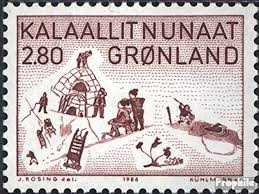Unveiling Groenland: An Insight into Arctic Wonders

Introduction to Groenland
Groenland, also known as Greenland, is the world’s largest island, located between the Arctic and Atlantic oceans. Its vast ice sheets, unique wildlife, and rich cultural heritage make it a significant destination for researchers and travelers alike. In recent years, the island has gained attention not only for its natural beauty but also for the pressing environmentalissues it faces due to climate change.
The Importance of Groenland
As an integral part of the Arctic region, Groenland plays a crucial role in global climate regulation. The island’s ice sheets contain about 10% of the world’s freshwater and serve as a critical indicator of climate change. Scientists are closely monitoring Groenland’s ice melt patterns, as accelerated melting could lead to rising sea levels worldwide, impacting coastal cities and ecosystems.
Cultural Significance
Groenland is home to a diverse range of Inuit communities that have thrived for thousands of years. These communities maintain a rich cultural heritage rooted in traditional practices, language, and customs. The capital city, Nuuk, blends modern life with indigenous culture, offering visitors a chance to explore museums, art galleries, and local cuisine that reflect the island’s history.
Current Events and Challenges
In recent months, Groenland has been at the forefront of discussions regarding climate policy and sustainable development. The island is facing some of the highest rates of climate change impacts, with scientists reporting that its ice sheet is losing mass at unprecedented levels. In response, Groenland has been engaging with international partners to address environmental concerns and promote sustainable tourism to mitigate its carbon footprint.
Looking Ahead
The future of Groenland hinges on both local and global efforts to combat climate change. As the world becomes more aware of the environmental challenges facing this Arctic paradise, it is vital for governments and organizations to collaborate on solutions that respect the rights and traditions of its indigenous people while protecting its unique environment.
Conclusion
Groenland stands as a poignant reminder of the delicate balance between nature and humanity. Its unique culture, breathtaking landscapes, and urgent environmental issues deserve attention and action. As visitors flock to this stunning destination, the hope is that greater awareness will lead to effective strategies to preserve its beauty and integrity for generations to come.








